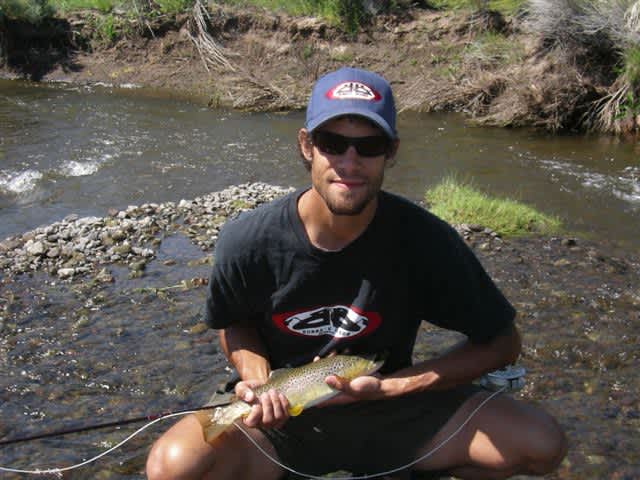How To Choose the Right Fly, Fly Fishing Basics 101
OutdoorHub 05.27.11

What’s unique about fly fishing flies in comparison with heavier tackle is that they can be designed to mimic an insect at different stages in the creature’s life, starting with a single orange, pink or silver egg, to the emerging nymph, to the airborne adult occasionally alighting on the surface of the water. The mayfly, for example, is a great species for the beginner fly angler to imitate because one can fish three different versions, nymph, dry, and wet, depending on the phase of the hatch, which won’t be obvious unless you see scads of mayflies zipping around.
While casting dry flies might be the quintessential form of the sport/art, and for many, the most exciting, trout actually get more of their food beneath the surface. I read on a fly fishing forum somewhere that most species are believed to obtain only 20-35% of their diet from topwater insects.

There are a handful of key flies or “patterns” that should be at the forefront of any advice on fly fishing basics. The top dry flies include Adams, Dave’s hopper, black midge, bivisible and the royal coachman. Wet flies: Black or brown woolly worm sized from 10-12, black ant, and you can’t go wrong with large to mid-sized stimulators for brown trout. To mimic small minnows you’ll want to have an arsenal of streamers in both natural earth tones, as well as flashy bright colors. Also try sinking nymph and emerging patterns like a Copper John, bead-head prince, or gold ribbed hair’s ear. You’ll want to have a variety of wet and dry flies, along with some nymphs and streamers wherever you fish. And it’s a good thing to have at least three of each because before you know it you’ll be down to the last one when you realize that’s what the big boys are eating today.
A great option for a beginner or experienced angler is a dry fly with a short white “parachute” of deer hair sticking up from the insect’s thorax area. It makes a brown or tan fly much more visible, yet fish can’t see the white hairs from below. Parachute-style presentations have become more popular recently, probably because there’s no need for a tie-on or stick-on indicator which can screw up precise fly placement when casting and sometimes spook skittish trout.
The great thing about fly fishing flies is that they can represent not only insects but every type of food a fish likes to eat, from frogs and crawfish to mice and minnows. But the main purpose of the fly rod is to deliver perfect insect replicas to hungry fish. Not just hungry but picky fish — mainly trout — which is the real reason the sport of fly fishing has occasionally suffered accusations of elitism and snobbery. It’s because the fish themselves are snobs. You would think any fish would be pretty happy to find any type of live insect floating inches from their nose. Not so with a trout. They are critical not only of the insect’s variety but also want to know on what day, even at what hour, a bug was born. How should one approach a fish with this kind of attitude? You have to become a BIGGER SNOB. You have to learn more about insects than the fish. You have to practically become an insect, yourself. But you don’t have to do overnight. When I was just starting out fly fishing I was shocked to learn about STOMACH PUMPS for fish and I thought, if you were able to catch the trout whose stomach you’re pumping, shouldn’t you be convinced that your fly is working? I still haven’t bought one of those things, but I have found a lot of cool stuff in the stomachs of fish . . .

The fly rod is an elegant and simple tool for delivering a delicate feast to nervous trout, but the infinite number of bugs to choose from makes the whole thing seem a little complicated to the beginner; wild colors, strange names and every increment of hook size from massive to microscopic. Most people just want to learn how to cast properly and eventually catch fish, without having to earn a bachelor’s in ichthyology with a minor in entomology. But with a little practice and less than $300 worth of gear you can get into fly fishing and have a great time doing it. I hope these fly fishing basics will get you well on your way to years of enjoyment on the stream or lake.

